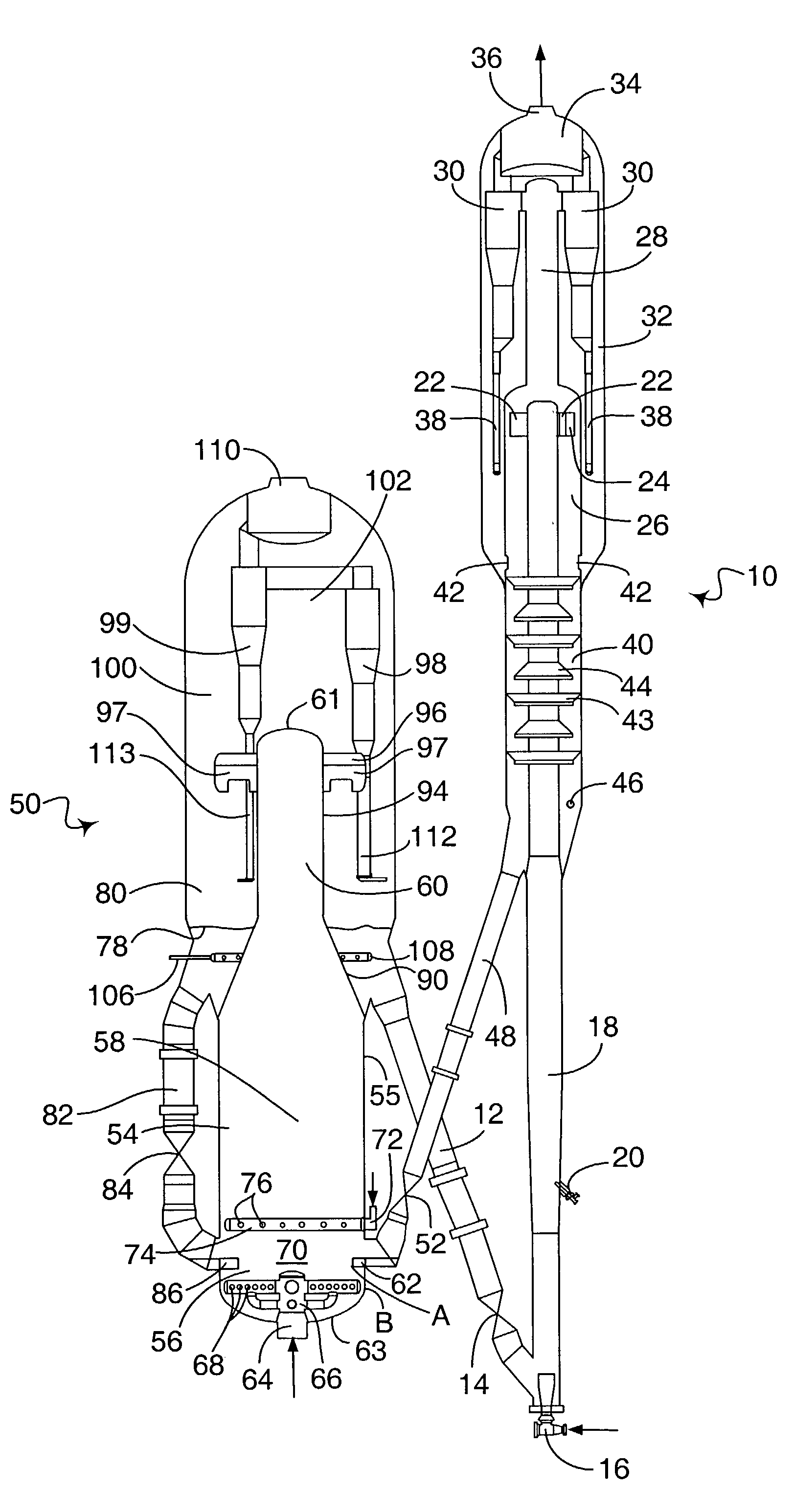Apparatus and process for regenerating catalyst
- Summary
- Abstract
- Description
- Claims
- Application Information
AI Technical Summary
Benefits of technology
Problems solved by technology
Method used
Image
Examples
Embodiment Construction
[0017]The process and apparatus of the present invention may be embodied in an FCC unit. FIG. 1 shows an FCC unit that includes a reactor vessel 10 and a combustor vessel 50. A combustor standpipe 12 transfers catalyst from the combustor vessel 50 at a rate regulated by a slide valve 14 to the reactor vessel 10. A fluidization medium such as steam from a nozzle 16 transports catalyst upwardly through a riser 18 at a relatively high density until a plurality of feed injection nozzles 20 (only one is shown) inject feed across the flowing stream of catalyst particles. The resulting mixture continues upwardly through the riser 18 until a pair of disengaging arms 22 tangentially discharge the mixture of gas and catalyst from a top of the riser 18 through ports 24 into a disengaging vessel 26 that effects separation of gases from the catalyst. A transport conduit 28 carries the hydrocarbon vapors, including stripped hydrocarbons, stripping media and entrained catalyst to one or more cyclo...
PUM
| Property | Measurement | Unit |
|---|---|---|
| Speed | aaaaa | aaaaa |
| Speed | aaaaa | aaaaa |
| Residence time | aaaaa | aaaaa |
Abstract
Description
Claims
Application Information
 Login to View More
Login to View More - R&D
- Intellectual Property
- Life Sciences
- Materials
- Tech Scout
- Unparalleled Data Quality
- Higher Quality Content
- 60% Fewer Hallucinations
Browse by: Latest US Patents, China's latest patents, Technical Efficacy Thesaurus, Application Domain, Technology Topic, Popular Technical Reports.
© 2025 PatSnap. All rights reserved.Legal|Privacy policy|Modern Slavery Act Transparency Statement|Sitemap|About US| Contact US: help@patsnap.com



